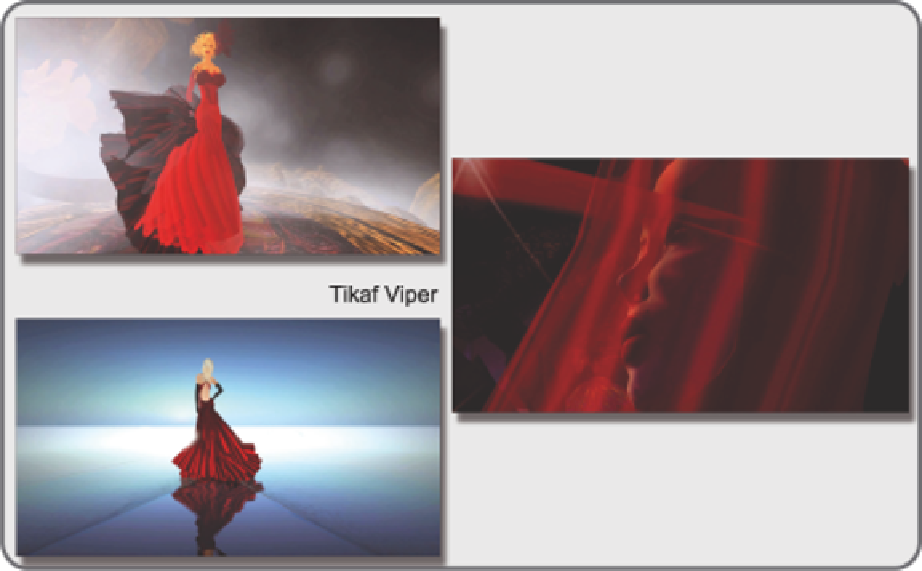Game Development Reference
In-Depth Information
FIGURE 16.4
Machinima stills from Olivier Florio (Tikaf Viper in Second Life). On the right, “Carnival,” shot on loca-
tion in 2011 at the Rodeo Drive sim in Second Life. The Carnival show was produced by Agtaope Carter-Lane, who runs
BeStyle District Agency. Left, two pictures from the 2011: A Year of Fashion, shot on location in 2012 at the Land's End sim
(courtesy of the avatar Sudane Erato) and other locations in Second Life. The model is Federica Galtier, wearing designs
from Jador and Vega Celli.
Furthermore, your attention can be further divided by the effects of camera position, real-life interruptions,
your avatar's position in space, the Internet connection you have, and other circumstantial things.
Narrative is clearly evident in literature, ilm making, or theatre, but when narrative is intertwined with
virtual environments that contain immersive 3D design, it becomes much harder to separate and deine. In a
socially based virtual world, several kinds of narrative happen simultaneously. You are using your personal
camera, your point of view, to record and store your visual choices as a personal narrative that can be expe-
rienced collectively, in the 2D environment of a blog page and in the 3D environment of a virtual world.
This personal narrative you are collecting may contain someone else's irst- or third-person narrative, so
the collective mix can be deep with meaning. A ine example of this type of environment is the War Poets
Exhibition in Second Life created by the University of Oxford, United Kingdom (http://www.oucs.ox.ac.uk/
ww1lit/secondlife).
It can be visited in the region called Frideswide in Second Life (http://maps.secondlife.com/secondlife/
Frideswide/128/128/21/). Within this virtual wartime environment, you walk the trenches of the World
War I Western front, seeing and feeling the dismal conditions while listening to sound clips of poetry and
journal entries written by the soldiers who experienced it. There are also places for viewing video clips from
current-day historians, who explain what happened there. Figure 16.6 is a screenshot of the “gas attack”
section, which combines moving particle-based text from the historic descriptions and poetry of the time

